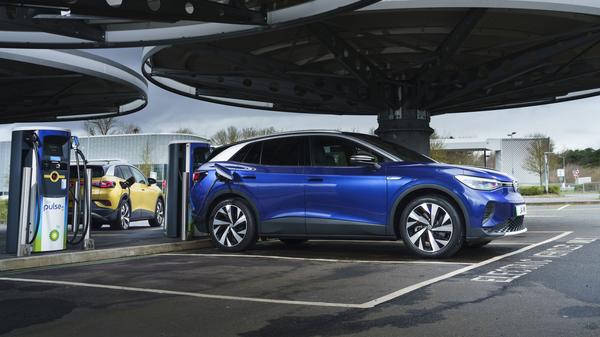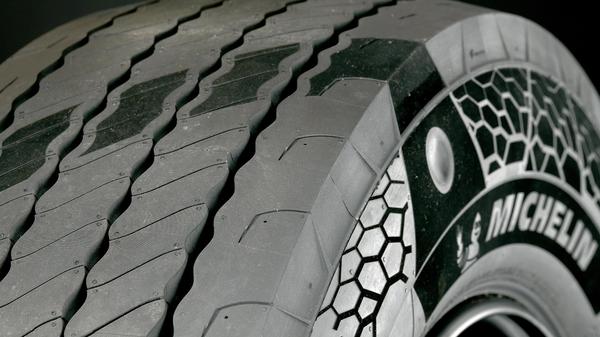News
Sustainability Newsletter – July 2023
Public charging network expands, hydrogen back on the agenda and choosing green tyres


Words by: Erin Baker
Published on 7 July 2023 | 0 min read
Amid the doom and gloom of slowing new electric-car sales, and deep scepticism about the viability of the Government’s 2030 deadline for the abolition new petrol and diesel cars, some good news emerges this week regarding one of the biggest barriers to buying an EV, that being the public charging network.
The rate of charging-point installation has increased by 80 per cent year on year, according to Zapmap, which provides an interactive map of the UK’s charging points with real time information on their type, power, status and any reported issues from users. From January to June 2022 an average of 891 charging points were installed each month. During the same period this year, an average 1,622 charging points were installed each month. Which is all well and good, but you’ll have noticed that car brands advertise charging times based on rapid chargers, and are less vocal about the many hours you’ll have to wait if using a 7kW point like those most home users have or the 22kW of many less snazzy public ones. With both you’re looking at hours, not minutes, for a meaningful charge. So, the better news is that 20 per cent of the charging points installed were rapid (50kW) or ultra rapid (120-250kW) chargers, taking the total in the UK to 8,680. These are the sort you’ll find at big forecourts operated by companies like Gridserve, and for a suitably equipped car they can whack on about 100 miles in 30 minutes.
The rate of charging-point installation has increased by 80 per cent year on year, according to Zapmap, which provides an interactive map of the UK’s charging points with real time information on their type, power, status and any reported issues from users. From January to June 2022 an average of 891 charging points were installed each month. During the same period this year, an average 1,622 charging points were installed each month. Which is all well and good, but you’ll have noticed that car brands advertise charging times based on rapid chargers, and are less vocal about the many hours you’ll have to wait if using a 7kW point like those most home users have or the 22kW of many less snazzy public ones. With both you’re looking at hours, not minutes, for a meaningful charge. So, the better news is that 20 per cent of the charging points installed were rapid (50kW) or ultra rapid (120-250kW) chargers, taking the total in the UK to 8,680. These are the sort you’ll find at big forecourts operated by companies like Gridserve, and for a suitably equipped car they can whack on about 100 miles in 30 minutes.

If hydrogen is more your bag (anyone?) Ford and BMW have both spoken quite a bit about it this month. BMW was out and about trialling a fleet of Hydrogen iX5s, with the explanation it was “focusing on vehicle technologies which ensure zero emissions at the tailpipe.” It continues, “While battery-electric vehicles play a major role in this strategy, hydrogen is also a versatile fuel that will play a key role on the road to climate neutrality and we firmly believe it will also become much more relevant for individual mobility.” Interesting.
Don't order yours yet, though, unless you’re willing to have the sort of fuelling experience that leaves you envious of electric-car drivers searching for a working slow charger. This on the basis there are currently 15 hydrogen stations in the UK. We’re certainly not talking next finance deal… Ford, meanwhile, is concentrating on hydrogen for vans and commercial vehicles where it makes sense, and where Ford has a gigantic vested interest, given the Transit remains the UK’s best-selling vehicle.
Don't order yours yet, though, unless you’re willing to have the sort of fuelling experience that leaves you envious of electric-car drivers searching for a working slow charger. This on the basis there are currently 15 hydrogen stations in the UK. We’re certainly not talking next finance deal… Ford, meanwhile, is concentrating on hydrogen for vans and commercial vehicles where it makes sense, and where Ford has a gigantic vested interest, given the Transit remains the UK’s best-selling vehicle.

Quick shout-out for Michelin. Tyres have been a frustrating part of the problem for drivers wanting to lower their carbon footprints, because the heavier the car (and electric cars are heavier thanks to those batteries), the quicker they wear through the tyres, and tyres tend to be more plastic than rubber these days. The result is that electric cars are throwing more plastic particulates up into the air and eco system than petrol or diesel cars. Michelin has unveiled two new tyres for cars and buses with 45 per cent and 58 per cent of their structure comprising sustainable materials respectively, rather than rubber and plastics that are fully from crude oil. The tyres have performance levels that match conventional tyres, according to Michelin.
Another issue alongside rubber is a critically bad chemical in tyres called 6PPD, an anti-oxidant that reduces cracking and is found in all mainstream tyres. Research shows that when it degrades, it is lethal to fish, and the impact on human health is still unclear, according to a Reuters report. It’s worth at least querying what your tyre brand is doing about all this, and whether you can afford to do anything about it at the next tyre change. One great brand, which stands head and shoulders above Michelin and everyone else in this regard, is Enso (external link). It manufactures more durable tyres using sustainable rubber, and recycles tyres at their end of use. Together, we consumers can make a difference, if we keep asking the awkward questions.
Another issue alongside rubber is a critically bad chemical in tyres called 6PPD, an anti-oxidant that reduces cracking and is found in all mainstream tyres. Research shows that when it degrades, it is lethal to fish, and the impact on human health is still unclear, according to a Reuters report. It’s worth at least querying what your tyre brand is doing about all this, and whether you can afford to do anything about it at the next tyre change. One great brand, which stands head and shoulders above Michelin and everyone else in this regard, is Enso (external link). It manufactures more durable tyres using sustainable rubber, and recycles tyres at their end of use. Together, we consumers can make a difference, if we keep asking the awkward questions.